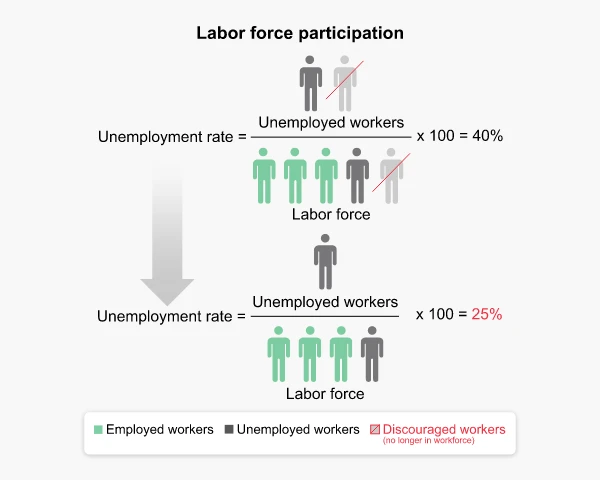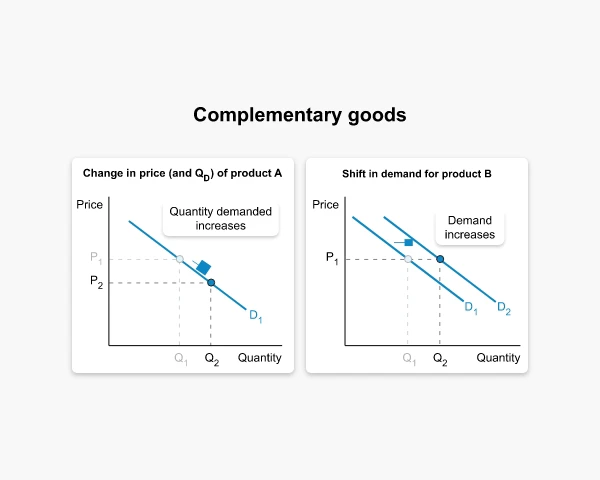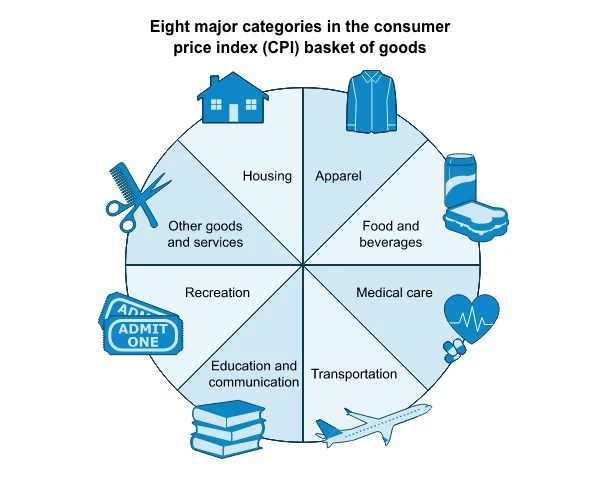AP® Macroeconomics Scoring Guide
Knowing an exam's scoring structure can help you identify sections where you can score well and areas that may be more challenging. This allows you to create a study plan that focuses on the content sections that address your specific strengths and weaknesses.
If you’re planning to take the AP® Macroeconomics exam and want to learn about its scoring process, you've come to the right place! Our AP Macro scoring guide will help you dig into the nooks and crannies of the test’s scoring system and will address common test-taker questions along the way.
How Is the AP Macroeconomics Exam Scored?
The AP Macroeconomics exam has two sections: Section I comprises multiple-choice questions (MCQs), whereas Section II consists of free-response questions (FRQs). The MCQ section contains 60 questions, while the FRQ section has 3 questions, including 2 short FRQs.
Per the College Board®’s 2023 AP exam update, the composite score for the AP Macro exam was 90 points, with Section I carrying 66% and Section II carrying 33% of the total exam score. The table below outlines the number of questions and composite score for each section:
| Section | No. of Questions | Approx. Raw Score |
|---|---|---|
| Section I: MCQ | 60 | 60 |
| Section II: FRQ | 3 1 Long FRQ | 2 Short FRQs |
30 |
| Subtotal | 90 | |
Are students penalized for guessing on the AP Macroeconomics exam? No! Students are not penalized for guessing on any of the AP exams, so feel free to take a guess rather than leaving a question blank. There is at least a 25% chance that the answer choice you pick will be correct; that, in and of itself, can potentially add a few more points to your final AP Macroeconomics score.
Section I: Multiple-Choice Section
As mentioned earlier, the MCQ section is worth a total of 60 points. There are 60 total questions in the section, meaning each question is worth 1 point.

Section II: Free-Response Section
In Section II, the scoring distribution for the FRQs is complex. Per the data published by the College Board in 2023, AP Macro free-response questions are individually graded based on designated points outlined in the scoring guidelines specific to the AP Macro exam. The table below explains the allocation of points for each FRQ and their corresponding scores.
| Question no. | Points (P) | Multiplier (M) | Section II Composite Score = P * M |
|---|---|---|---|
| Question 1: Long | 10 | 1.5 | 15.00 |
| Question 2: Short | 5 | 1.5 | 7.50 |
| Question 3: Short | 5 | 1.5 | 7.50 |
| Composite Score | 30.00 | ||
As you can see from the table above, each FRQ is worth a specific number of points. The points you earn from each FRQ are multiplied by 1.5 to present your composite FRQ section score.
The College Board derives your final composite score by adding the scores you earned from Sections I and II. Your final composite score determines your AP score, a scaled number from 1 to 5. As of 2023, earning a composite score of 90 or higher on the AP Macro exam translates to a perfect 5! It’s important to note that only your AP score will appear on your AP score report.
AP Macroeconomics Scoring Table
Once recorded in the AP grading system, your AP Macro scores are then sent to the colleges you have selected for admission. If you want to send colleges your AP scores directly, we recommend visiting our AP Exam Scores page to learn how to do so.
While individual colleges may have specific AP score submission criteria, many colleges follow a standardized approach to converting your AP Macroeconomics score into the corresponding college grade. The table provided below shows the conversion of AP Macro scores into equivalent college grades:
| AP Exam Score | College Grade Equivalent | Qualification |
|---|---|---|
| 5 | A+ or | Extremely well qualified |
| 4 | A-, B+, or B | Very well qualified |
| 3 | B-, C+, or C | Qualified |
| 2 | — | Possibly qualified |
| 1 | — | No recommendation |
Colleges generally require a minimum score of 3 or higher on the AP Macro exam to be considered for admissions, credits, and advanced placement. Nonetheless, you should always check for specific AP Macro scoring requirements with your desired colleges to ensure eligibility.

AP Macroeconomics Score Distribution
If you're getting ready for the AP Macro exam, it's a good idea to see how students have done in the past. By looking at score distributions from previous years, you can get an idea of how challenging a course might be. It can also help you decide if you're ready to take another demanding class, especially if you already signed up for other AP courses. Let's take a look at how students performed on the AP Macroeconomics exam over the last three years:
| AP Score | % of Students 2023 | % of Students 2022 | % of Students 2021 | Avg. for three years |
|---|---|---|---|---|
| 5 | 17.1 % | 16.4 % | 18.0 % | 17.1 % |
| 4 | 22.9 % | 20.0 % | 19.6 % | 20.8 % |
| 3 | 24.7 % | 15.4 % | 13.7 % | 17.9 % |
| 2 | 21.6 % | 15.1 % | 15.7 % | 17.4 % |
| 1 | 13.7 % | 33.1 % | 32.9 % | 26.5 % |
| 3 & Above | 64.7 % | 51.8 % | 51.3 % | 55.9 % |
Did you know? Just 32 students out of around 149,000 scored a perfect 5 on the 2023 AP Macroeconomics exam. That's about 0.02 % of total test takers!
As you can see from the data above, getting a good score on the AP Macroeconomics exam has become harder in the past three years. In 2023, almost 1% more students scored a 5 compared to 2022. The AP Macro exam is tough, but with the right study tools, course instruction, and dedication, you can certainly score a 5.
At UWorld, we believe reviewing your course material regularly and taking practice tests will help you understand the important concepts. If you need help, you can try our AP Macroeconomics practice exams. These exams have detailed answers, quick notes, and flashcards to help you remember the concepts better and faster.
Scoring pattern for the 2022 AP Macroeconomics exam
Although you can understand how well you're likely to do on an AP exam by understanding its score distributions, it's also important to know the test's scoring pattern. A scoring pattern demonstrates how students have performed in different sections of an exam, so you can gauge which sections are challenging and which are easier for students. This information can help you determine which content areas you need to focus on and which you may find easier to grasp.
| 2023 AP Macro Exam | 2022 AP Macro Exam | |
|---|---|---|
| Challenging Areas | Unit 6: Open Economy - International Trade and Finance The average correct responses on the MCQ section were around 49%. |
1. Unit 3: National Income and Price Determination 2. Unit 6: Open Economy - International Trade and Finance Only around 9% of students earned all points possible on this free-response question. |
| High Scoring Areas | Unit 2: Economic Indicators and the Business Cycle 25% of students scored 90% or higher points on the MCQ section. |
Unit 2: Economic Indicators and the Business Cycle 13% of students earned a perfect score on questions about this unit. |
Minimum Score Requirements for College Credit
Many U.S. colleges award credit and advanced placement based on AP exam scores. With a score of 3 or higher, you can earn college credits and finish college faster. Depending on your college, a score of 3 or higher may allow you to skip the Macroeconomics course in your first semester and move on to more advanced classes. Some colleges even count a student's AP score as credits towards graduation.
It's important to understand that different colleges have different AP scoring requirements. Some colleges accept a score of 3, whereas others may require a 5. Some colleges may not give course credit for passing AP scores, but they may still place you in an advanced course. That's why it's essential to understand what your particular target colleges' AP policies are.
To make things easier, we have created a list of colleges and the AP Macro scores they accept. The list also shows which classes you can skip based on your AP score and whether passing the AP Macroeconomics exam can earn you college credit. Take a look at the list of the top 15 economics colleges to help you in your college search:
| School | AP Score | AP Recognition | Credit/Placement type | Credits |
|---|---|---|---|---|
| Harvard University | N/A | |||
| Massachusetts Institute of Technology (MIT) | 5 | Credit | Unrestricted Elective Credit | 9 |
| Stanford University | N/A | |||
| University of California, Berkeley | 3 | Credit | Semester Credits | 2.6 |
| University of Chicago | 5 | Credit | General Elective Credit | 100 Units |
| University of Pennsylvania | 5 | Placement | Economics 0200 | |
| Columbia University | 4 and 5 | Credit + Placement |
ECON UN1105 | 4 |
| New York University | 4 and 5 | Credit + Placement |
ECON-UA 1 | 4 |
| Northwestern University | 5 | Placement | ECON 201 | |
| University of Michigan | 4 and 5 | Credit + Placement |
Eligible for Econ 101 | 2 |
| Yale University | 4 and 5 | Credit | For ECON 122 or ECON 126 | 1 |
| Princeton University | 5 | Placement | Economics 100 | Waiver on Economics 101 |
| University of Southern California | 4 and 5 | Placement | Upper-division ECON courses | Waiver on ECON 205 |
| Cornell University | 4 and 5 | Credit + Placement |
Placement out of ECON 1120 | 3 |
| Boston University | 4 and 5 | Credit | Course Equivalent:EC 102 | 4 |
Frequently Asked Questions (FAQs)
What is a good AP Macroeconomics score?
What is a bad AP Macroeconomics score?
What is the average AP Macroeconomics score?
The mean score for the 2023 AP Macro exam was 3.08.
How can I improve my chances of scoring high in the AP Macroeconomics exam?
By thoroughly studying course content, strengthening macroeconomics fundamentals, and taking regular practice tests, you are all but guaranteed to improve your AP Macro score. If you need help creating a study plan, our article on how to Study for AP Macroeconomics is here to help!
How do I get a 5 in AP Macroeconomics?
The secret to getting a 5 on your AP Macroeconomics exams is to review the topics and take regular practice tests. If you need help, visit UWorld’s AP Macroeconomics Exam Prep for detailed lessons, practice tests, and revisions to achieve your AP goals!

References
- AP Macroeconomics Course and Exam Description. (Fall 2022). apcentral.collegeboard.org. Retrieved March 25, 2024, from https://apcentral.collegeboard.org/media/pdf/ap-macroeconomics-course-and-exam-description.pdf
- AP Macroeconomics. (n.d.). apstudents.collegeboard.org. Retrieved March 25, 2024, from https://apstudents.collegeboard.org/courses/ap-macroeconomics
- AP Macroeconomics. (n.d.). apstudents.collegeboard.org. Retrieved March 25, 2024, from https://apstudents.collegeboard.org/courses/ap-macroeconomics/assessment
- Trevor Packer. (June 29, 2023). twitter.com. Retrieved March 25, 2024, from https://twitter.com/AP_Trevor/status/1674409033451597825
- Trevor Packer. (June 29, 2023). twitter.com. Retrieved March 25, 2024, from https://twitter.com/AP_Trevor/status/1674409031266435072
- Trevor Packer. (June 29, 2023). twitter.com. Retrieved March 25, 2024, from https://twitter.com/AP_Trevor/status/1674408871295696897
- About AP Scores. (n.d.). apstudents.collegeboard.org. Retrieved March 25, 2024, from https://apstudents.collegeboard.org/about-ap-scores#:~:text=AP%20Exams%20are%20scored%20on,scores%20of%203%20and%20above.
- 2023 AP Score Distributions: AP Macroeconomics. (2023). apcentral.collegeboard.org. Retrieved March 25, 2024 from https://apcentral.collegeboard.org/media/pdf/ap-score-distributions-by-subject-2023.pdf
- 2022 AP Score Distributions: AP Macroeconomics. (2022). apcentral.collegeboard.org. Retrieved March 25, 2024, from https://apcentral.collegeboard.org/media/pdf/ap-score-distributions-by-subject-2022.pdf
- 2021 AP Score Distributions: AP Macroeconomics. (2021). apcentral.collegeboard.org. Retrieved March 25, 2024, from https://apcentral.collegeboard.org/media/pdf/ap21-macroeconomics-score-distributions.pdf
- Chief Reader Report on Student Responses:2023 AP Macroeconomics Set 1 Free-Response Questions. (2023). apcentral.collegeboard.org. Retrieved March 25, 2024, from https://apcentral.collegeboard.org/media/pdf/ap23-cr-report-macro-set-1.pdf
- Chief Reader Report on Student Responses:2023 AP Macroeconomics Set 2 Free-Response Questions. (2023). apcentral.collegeboard.org. Retrieved March 25, 2024, from https://apcentral.collegeboard.org/media/pdf/ap23-cr-report-macro-set-2.pdf
- AP MacroeconomicsScoring Guidelines Set 1. (2023). apcentral.collegeboard.org. Retrieved March 25, 2024, from https://apcentral.collegeboard.org/media/pdf/ap23-sg-macroeconomics-set-1.pdf
- AP MacroeconomicsScoring Guidelines Set 2. (2023). apcentral.collegeboard.org. Retrieved March 25, 2024, from https://apcentral.collegeboard.org/media/pdf/ap23-sg-macroeconomics-set-2.pdf
- Advanced Placement | MIT Office of the First Year. (n.d.). firstyear.mit.edu. Retrieved March 25, 2024, from https://firstyear.mit.edu/academics-exploration/ap-transfer-credit/advanced-placement/
- Advanced Placement (AP) Credit Chart. (n.d.). studentservices.stanford.edu. Retrieved March 25, 2024, from https://studentservices.stanford.edu/my-academics/earn-my-degree/test-transfer-credit/external-test-credit/advanced-placement-ap-credit
- AP credits | UC Admissions. (n.d.). admission.universityofcalifornia.edu. Retrieved March 25, 2024, from https://admission.universityofcalifornia.edu/admission-requirements/ap-exam-credits/ap-credits/
- Examination Credit < University of Chicago Catalog. (n.d.). collegecatalog.uchicago.edu. Retrieved March 25, 2023, from http://collegecatalog.uchicago.edu/thecollege/examinationcreditandtransfercredit/
- First-Year Admission | Penn Admissions. (n.d.). admissions.upenn.edu. Retrieved March 25, 2024, from https://admissions.upenn.edu/admissions-and-financial-aid/preparing-for-admission/freshman-admission/external-exam-credit
- AP Credit < School of General Studies | Columbia University. (n.d.). bulletin.columbia.edu. Retrieved March 25, 2024, from https://bulletin.columbia.edu/general-studies/academic-policies/ap-credit/
- Admission (Including Advanced Standing Credit by Examination). (n.d.). cas.nyu.edu. Retrieved March 25, 2024, from https://cas.nyu.edu/academic-programs/bulletin/policies/admission.html#advanced-placement-program
- AP/IB Credit Northwestern University | School of Education & Social Policy. (n.d.). sesp.northwestern.edu. Retrieved March 25, 2024, from https://www.sesp.northwestern.edu/ugrad/ap-credit.html
- AP Guidelines | University of Michigan Office of Undergraduate Admissions. (n.d.). admissions.umich.edu. Retrieved March 25, 2024, from https://admissions.umich.edu/apply/first-year-applicants/ap-ib-credit/ap-guidelines
- Table of Acceleration Credit < Yale University. (n.d.). catalog.yale.edu. Retrieved March 25, 2024, from https://catalog.yale.edu/ycps/table-of-acceleration-credit/
- Advanced Placement. (n.d.). odoc.princeton.edu. Retrieved March 25, 2024, from https://odoc.princeton.edu/advancedplacement#compnotes
- AP Exam Credit at USC - Office of Academic Records and Registrar. (n.d.). arr.usc.edu. Retrieved March 25, 2024, from https://arr.usc.edu/students/transfer-credit-services/ap-exam-credit-at-usc/
- Advanced Placement - Cornell University - Acalog ACMSTM. (n.d.). courses.cornell.edu. Retrieved March 25, 2024, from https://courses.cornell.edu/content.php?catoid=31&navoid=7931#CEEB_AP_Exams
- BU ADVANCED CREDIT GUIDE (2023-2024). (n.d.). bu.edu. Retrieved March 25, 2024, from https://www.bu.edu/admissions/files/2018/06/Advanced-Credit-Guide.pdf
- The Best Colleges in America, Ranked. (n.d.). usnews.com. Retrieved March 25, 2024, from https://www.usnews.com/best-colleges